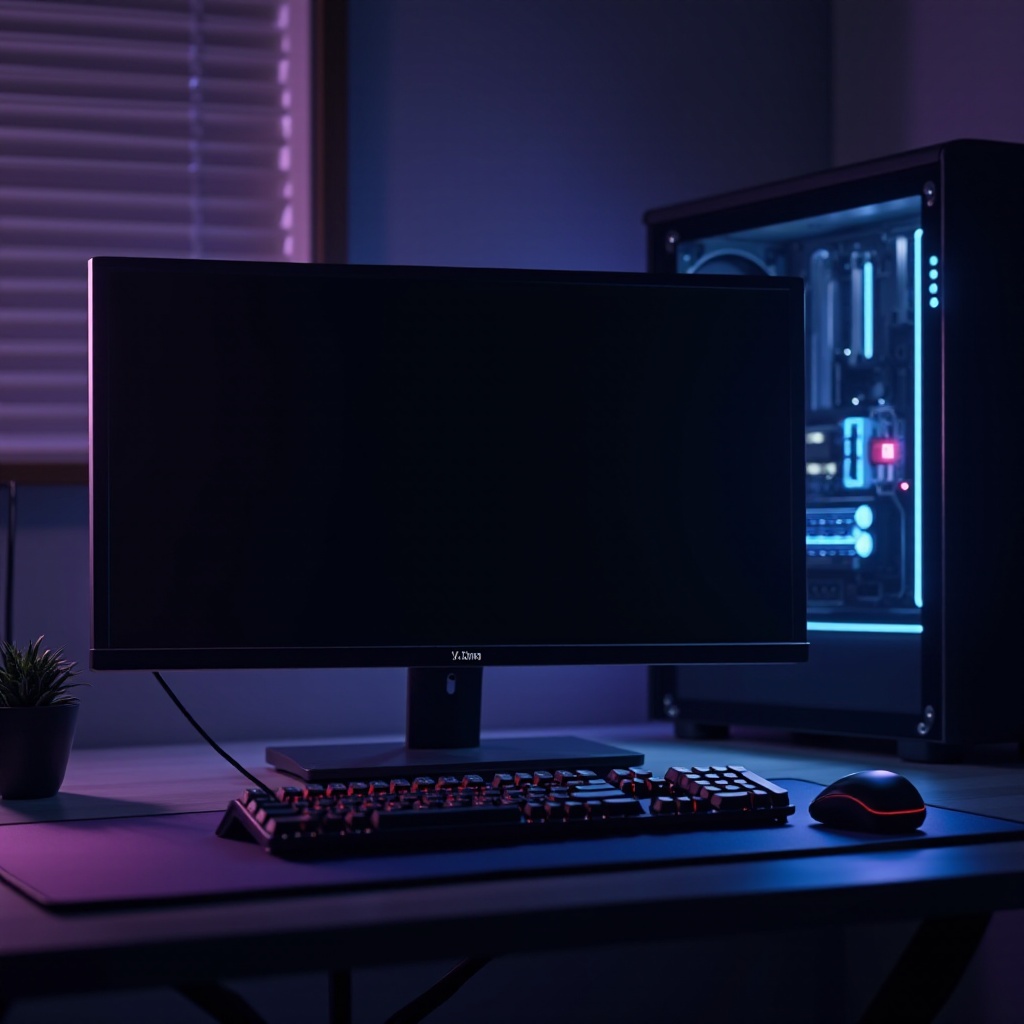Troubleshooting Black Screen Issues on Gaming PCs
Introduction
The immersive world of gaming is abruptly interrupted when a black screen appears on your gaming PC. Enthusiasts invest considerable time and resources into choosing the best gaming setups to ensure seamless gameplay. Yet, nothing is more frustrating than technical glitches, and a screen going black is one of the most troubling issues out there. This problem requires a strategic approach for effective diagnosis and resolution. Understanding whether these interruptions are hardware-related or software-induced is critical to remedying and preventing them in the future.
Common Causes of Black Screens
Understanding the root causes of black screens on gaming PCs is crucial for targeted troubleshooting. Here are some common culprits:
Power Supply Problems
An insufficient power supply is a frequent cause of black screens. Gaming systems demand high power to drive performance-intensive components. If your power supply is failing or incompatible, it may not deliver the consistent power needed, resulting in your screen going black.
Overheating Issues
Overheating is another potential problem. Gaming generates a substantial amount of heat. Without proper cooling, essential components like the CPU or GPU may shut down to prevent damage, leading to a blackout of your screen.
Graphics Card Failures
As the heart of a gaming PC, a graphics card’s malfunctioning or improper connection to the motherboard can cause intermittent black screens. Ensuring optimal performance of the graphics card is crucial for stability.
Understanding these causes paves the way for effective troubleshooting. Now, let’s explore the initial steps to address black screen issues.

Initial Troubleshooting Steps
Before diving into more extensive hardware or software solutions, certain basic steps often resolve black screen dilemmas.
Checking Power Connections
- Verify that all power and monitor cables are securely connected.
- Inspect for any loose connections or damaged cables and replace them as necessary.
Ensuring Proper Monitor Settings
- Confirm that your monitor is set to the correct input source.
- Reset the monitor to factory settings to eliminate configuration errors.
Testing with Another Display
- Try connecting your PC to a different monitor or use an alternate display cable.
- This helps determine if the root cause lies within the monitor or the PC itself.
If these steps don’t resolve the issue, consider exploring more advanced troubleshooting strategies.

Advanced Troubleshooting Techniques
For situations where basic steps are inadequate, these advanced strategies can be effective:
Updating Graphics Drivers
Outdated or corrupted graphics drivers often lead to black screens. Regular updates are key:
- Visit the graphics card manufacturer’s website for the latest drivers.
- Utilize device manager tools to identify and install necessary updates.
BIOS Updates and CMOS Reset
Improper BIOS settings can lead to instability.
- Ensure your BIOS is updated to its latest version.
- Perform a CMOS reset to undo any potentially harmful overclocking settings.
Inspecting Internal Hardware Connections
- Open the PC case and reseat internals like RAM and the graphics card.
- Look for physical damage or wear that could be causing issues.
After addressing the hardware, next we delve into software solutions to tackle potential black screen problems.
Software Solutions to Black Screen Problems
Software issues can also trigger black screens. Here are solutions that may rectify the issue:
Rolling Back Recent Software Updates
- If the screen issue started post a software update, roll back to a previous state.
- Employ the system’s restore feature if necessary.
Adjusting Power Settings
- Control panel offers extensive power management. Switch your PC to high-performance mode to avoid unexpected power constraints.
Resolving Operating System Conflicts
- Identify operating system issues via the event viewer.
- A system file check can replace any corrupted files contributing to the problem.
With successful application of these solutions, software-induced black screens can be minimized. Let’s review preventive measures to lower future risks.
Preventive Measures for Future Issues
Implement these preventive strategies to ensure your gaming PC runs smoothly:
Keeping Drivers and System Updated
Maintain the latest updates for drivers and system software to ensure optimal performance and compatibility with new games.
Regular System Maintenance
Schedule periodic maintenance checks. Clean dust from fans and components, and ensure airflow is unobstructed.
Using Quality Power Supplies
Invest in a premium, compatible power supply capable of handling your PC’s intensive requirements, reducing risks of power-based blackouts.
Adopting these preventive actions will enhance the longevity and reliability of your gaming PC. Now, let’s conclude.
Conclusion
Black screens can be a significant hindrance to gaming, but with correct information and strategies, you can address and prevent these occurrences. By combining simple fixes, advanced technical adjustments, and regular preventive measures, you maintain seamless gaming sessions.
Frequently Asked Questions
Why does my gaming PC screen go black randomly?
Several factors can cause this issue, such as power supply problems, overheating, or graphics card failures. Addressing these components first can help resolve the issue.
How can I prevent black screen issues on my gaming PC?
Keep your system updated, maintain proper cooling, and utilize quality hardware components. Regular maintenance checks are also crucial.
When should I consider seeking professional help for screen problems?
If neither initial nor advanced troubleshooting steps resolve the issue, or if you are uncomfortable tackling hardware fixes, professional assistance is advisable.
